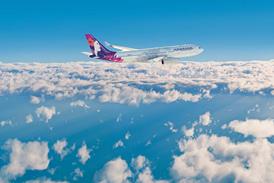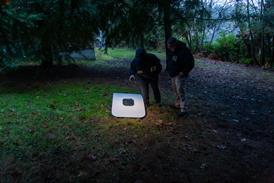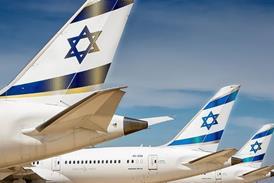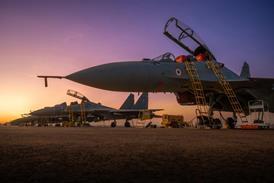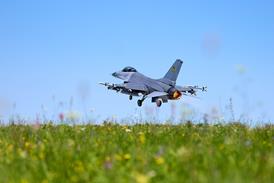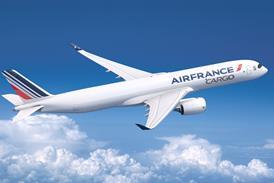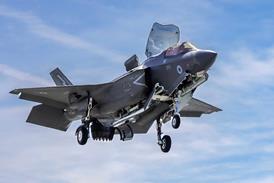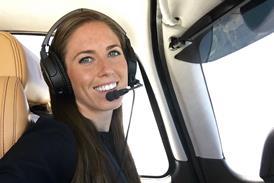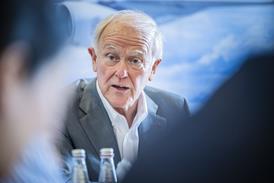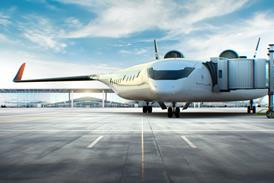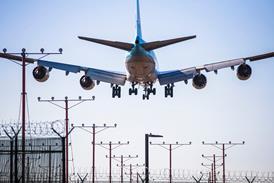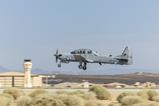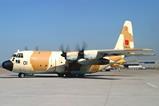Canada has begun construction work on the first facility that will house the country’s forthcoming fleet of Airbus Defence & Space A330 multi-role tanker transport (MRTT) jets.
Canadian defence minister David McGuinty on 7 July presided over a groundbreaking ceremony at CFB Trenton in southern Ontario, where seven of the Royal Canadian Air Force’s (RCAF’s) new refuellers – locally designated the CC-330 Husky – will be based.
Nine CC-330s will replace Canada’s five A310-300-based CC-150 multi-purpose transports.
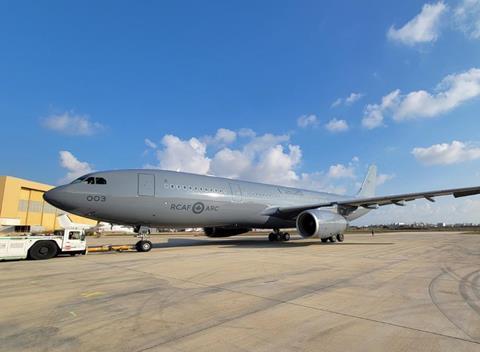
The C$850 million ($620 million) project was first announced in 2024 and includes resurfacing the existing runway, aprons and taxiways at Trenton. A new hangar, training facility, fuel depot, and ramp extension will also be constructed.
“The infrastructure upgrades and new construction taking place here at Canadian Forces Base Trenton will ensure our personnel have the facilities and resources they need to operate the CC-330 Husky safely and effectively for decades to come,” says Colonel Andy Bowser, commander of both CFB Trenton and the RCAF’s 8 Wing.
That unit provides tactical and strategic airlift to the Canadian armed forces, operating the Lockheed Martin C-130, Boeing C-17 and Bell C-146 helicopter, among other types.
A second CC-330 base is under development in Edmonton, Alberta, which will support up to three aircraft. Of Ottawa’s nine planned Husky refuellers, four will be new-build examples and one will be configured for VIP transport.
Canada took delivery of the fifth CC-330 in June, the final used example. A new-build A330 was ferried from the Airbus commercial factory in Touluse, France to an Airbus Defence & Space facility in Getafe, Spain in June to start conversion into the MRTT configuration.
Ottawa is in the midst of a generational recapitalisation of its military capability, with some C$8 billion in spending planned over the next five years and C$73 billion throughout the next two decades.
Those plans cover the purchase roughly 140 new combat aircraft, including Lockheed F-35A fighters, Boeing P-8A maritime patrol jets, and General Atomics Aeronautical Systems MQ-9B uncrewed aircraft. That framework includes some C$18 billion to develop a replacement for the RCAF’s fleet of 82 Bell 412-based Griffon helicopters.
Separately, Ottawa will spend nearly C$40 billion on targeted modernisations at the joint Canada-USA North American Aerospace Command. The tanker acquisition is funded under that NORAD capability upgrade package.
“Equipping the Canadian armed forces to meet the complex challenges of today and tomorrow is a top priority for our government,” says McGuinty.
Amidst tensions with the USA unprecedented in modern times, recently elected prime minister Mark Carney has doubled down on the expansion of defence spending rolled out in 2024 under his predecessor Justin Trudeau.
In June, Carney announced an additional C$9 billion in military expenditures for the current fiscal year alone, with the goal of meeting defence spending targets set out for members of the NATO alliance. Canada has long been a laggard when it comes to meeting the alliance spending target, which until recently was set at the equivalent of 2% of gross domestic product on core military functions for each member state.
Shortly after Ottawa announced it will for the first time ever meet the 2% target this year, NATO heads of state and governments agreed to raise that target to 3.5% at the alliance’s annual summit in late June.


